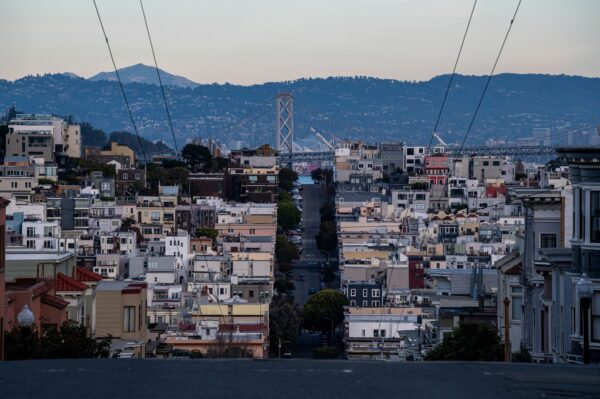By Alexandre Tanzi, Felipe Marques, Michael Sasso and Amanda Albright
Miami’s Star Island has long lived up to its name. From Shaquille O’Neal to Rosie O’Donnell, the exclusive enclave only accessible by gated bridge has drawn the rich and famous for decades.

And yet, Ken Griffin’s move south from Chicago has launched the neighborhood into a new stratosphere, and turned it into a microcosm of the shift in demographic and housing trends across the US.
A typical home on the island is valued at $40 million, up from $23.5 million in December 2019 — making the area the priciest neighborhood in America, data from Zillow Group Inc. show. The gap has never been wider between its closest competition: Port Royal in Naples, Florida, and Beverly Hills, the star-studded California haven.
Some of that is directly the result of Griffin, founder of hedge fund powerhouse Citadel. He bought five properties on the island for a combined $194 million.
Griffin’s machinations are part of a broader shift among America’s ultra-rich and powerful in the wake of the Covid-19 pandemic. Their moves, away from places like New York’s Upper East Side and San Francisco’s Nob Hill to warmer, less-dense regions of Florida and Texas have lifted real estate prices in some locales while leaving other neighborhoods behind. And as wealthy executives bring their businesses along with them, the merely affluent follow, too.
A Bloomberg analysis of home values in the country’s most-expensive areas show some of these changes in stark terms. While a broad real estate boom lifted prices nationwide — adding an estimated $12 trillion in new US housing wealth since the pandemic — the Miami region saw its number of million-dollar ZIP codes more than double from the end of 2019 through 2022. It’s a similar story in places such as Park City, Utah, or Flagstaff, Arizona, with house-price gains of more than 90% in some wealthy neighborhoods.
While parts of New York and California, traditional wealth centers, still rank near the top of list of most expensive areas, values in some neighborhoods have actually declined since 2019, Zillow data show.
Even as rising interest rates cool the nation’s housing boom, the changes represent a broader reset for America’s priciest housing as state and local officials grapple with how to restore the allure of hollowed-out cities. Some of the ultra-rich — Griffin among them — cite concerns over rising crime. Others are lured elsewhere by lower taxes. Whatever the rationale, these patterns and the corresponding surge in housing costs are reshaping regions, changing business decisions and adding to affordability challenges for non-wealthy residents.
“The pandemic really was like a tectonic plate shift,” said Maria Elena Lagomasino, chief executive officer of WE Family Offices, which works with ultra-high-net-worth families. She operates out of Miami’s Brickell neighborhood, an area so finance-heavy it’s been dubbed Wall Street South. To her, the migration of affluent people to the area is only in “the early innings.”Read more: Citadel’s Ken Griffin Brings Billions to Make Miami Wall Street SouthFlorida — a pandemic destination because of its sunny climate, relatively lax Covid rules and no state income tax — is home to 38 of the 50 million-dollar US neighborhoods with the largest price gains by percentage over the past three years, Zillow data show. Those areas have all seen home values more than double.
It’s no surprise to Dina Goldentayer, who’s been a luxury real estate broker in Miami Beach for almost two decades. During a tour of the area’s most expensive neighborhoods, she said the vibe has changed from when she first arrived in her early 20s, lured by the party atmosphere and working as a cocktail waitress in South Beach.
“Miami Beach used to be this place you come a few days to party, get some sun and get out,” said Goldentayer, executive director of sales at Douglas Elliman. “Now it’s the place to live. It’s the lifestyle, weather, economic policies, political policies. Everyone wants to come here.”
Her business is still thriving, even if it’s not as frenzied as it was in the height of the pandemic, when super-rich buyers — “whales,” as she calls them — had one phone call to decide if they wanted a property or not. Last year, her house sales were around $475 million, down from about $750 million in 2021 — but before the pandemic, a good year would be $100 million to $200 million.
“It used to be that there would be a whale in town every other week looking to buy; now there’s one every day of the week,” she said. “And when states like California do their mansion tax, or Massachusetts implements a millionaire’s tax, it just means more business for me.”
Star Island has always been one of the nation’s priciest neighborhoods, a gated community where all houses overlook the ocean, with spacious mansions drawing in celebrities and billionaires. But the largesse has spread to other neighborhoods catering to different needs.
The Venetian Islands — a chain of six man-made islands, connected by the Venetian Causeway, including Di Lido, Rivo Alto and San Marino islands — have turned into “the land of rich bachelors,” Goldentayer said. In a short walk (or scooter drive) the well-off can hit one of the 10 different nearby gyms (including a Barry’s) then grab a bowl of acai (Pura Vida is a popular spot). For families looking for larger houses but without the budget of a Ken Griffin, there are places like Palm Island, with a median home value of just under $10 million.
The gains have been diverse, not only among ultra-elite areas like Star Island, but to parts of Florida that are traditionally not known as wealth havens. Before the pandemic there were zero ZIP codes in the Tampa area where the median home-listing price topped $1 million. Now there are four.
Bruce Ring, who specializes in selling waterfront homes for Lenson Realty Inc. in Palm Beach County, says the market became supercharged by late 2020, when properties would sell for double what they had fetched just a couple years earlier. He said his clients have moved because of newfound openness to remote work and changes to state and local tax deductions.
“One guy told me the taxes he’s not paying in Massachusetts is essentially paying for his new house in Florida,” Ring said. “For them not to do it would cost them more than to do it.”
The shifts have political implications as wealthy residents bring their dollars and donations to new areas. Griffin, for instance, was once one of Illinois’s major political donors before relocating Citadel from Chicago. He has financially backed Florida Governor Ron DeSantis, a potential 2024 Republican presidential nominee. The nation’s growing culture wars have also come into play; DeSantis said “people are voting with their feet” at a re-election campaign event last year and has since bashed states like New York and Illinois for being soft on crime. Meanwhile, California Governor Gavin Newsom, a Democrat, ran political ads in Florida promoting his state as a haven from restrictive conservative policies.
California remains the home of some of America’s wealthiest areas, with the Silicon Valley town of Atherton ranking as the priciest ZIP code in the country, with a $7.4 million median home value, according to Zillow. But that has actually fallen about 3% over the past year — a reflection of a tech boom that created spectacular riches but is now fizzling.
San Francisco itself, meanwhile, is struggling to recover from the pandemic as tech companies allow flexible work, hollowing out the downtown, while a persistent homelessness crisis and headlines of rising crime diminish some of its appeal. Home values in neighborhoods such as Cathedral Hill, Mission Dolores, South of Market, Nob Hill, Lower Haight and Mission are all down by more than 10% since 2019, Zillow data show. The average homeowner in these neighborhoods has seen their property value drop by more than $280,000.
New York is facing similar challenges. A Quinnipiac University poll released this month found that four in 10 residents don’t feel safe in the city, while shifts to hybrid work has left downtown office towers partially empty. It also is home to one of the highest income-tax rates among US states, and state progressive lawmakers have proposed a first-of-its-kind wealth tax.See also: Remote Work Is Costing Manhattan More Than $12 Billion a Year
Manhattan’s Upper East Side, in particular, has seen the number of available homes for sale climb since the pandemic, said Brian Meier, associate broker at Christie’s International Real Estate NYC. That neighborhood has had values fall 8.8% over the past three years, according to Zillow.
The city is still home to strong luxury-property demand — the Brooklyn townhome market, for instance, is thriving because people want more outdoor space and a neighborhood vibe, Meier said. More fundamentally, wealthy people will always have a need to be in the world’s financial center.
“It’s the cultural capital of America, and one of the cultural capitals of the world,” Meier said. “I’m talking to a lot of buyers who left New York in 2020 and they’re already talking about coming back, whether it’s a second home or primary residence.”
Still, in Florida, the newcomers keep coming, said Tim Savage, owner of Gulf Coast International Properties, a luxury real estate firm in Naples. The city — where values in neighborhoods like Royal Harbor, Coquina Sands and Old Naples have more than doubled in the past three years — used to be particularly popular among Midwesterners, but it’s now seeing people arrive from all over the US, he said.
Savage is selling a $99 million property that’s located right on the beach and is walking distance to the downtown. It’s a high price for the Naples market, and the buyer could turn the property into different lots or one large home. He said he had gotten two offers on it as of late January.
“I don’t see the underlying fundamentals of why we’ve seen buyers come here going away, even though Covid restrictions have eased,” he said. “Once that switch got flipped, I don’t know how you put it back in the box.”
More stories like this are available on bloomberg.com.




